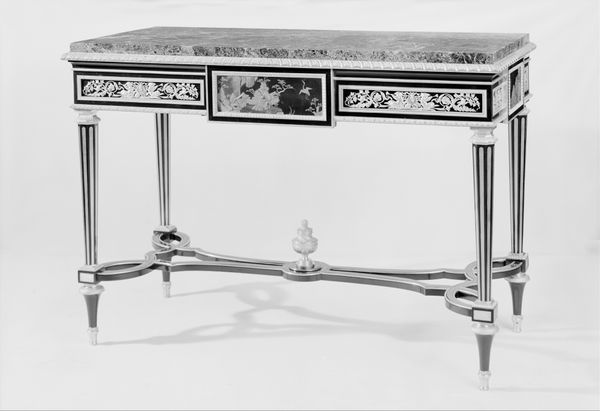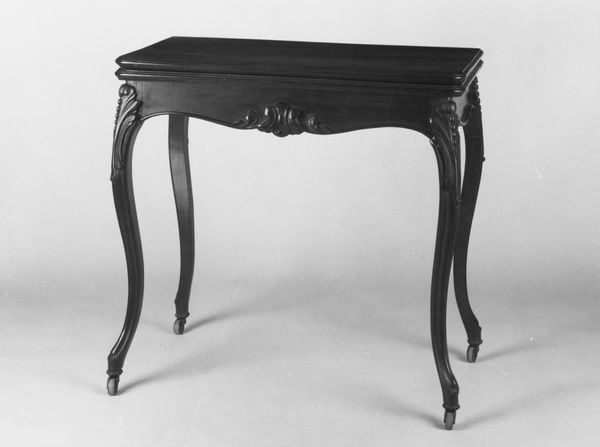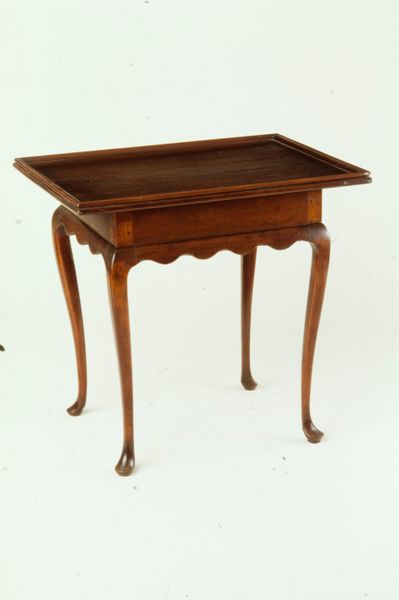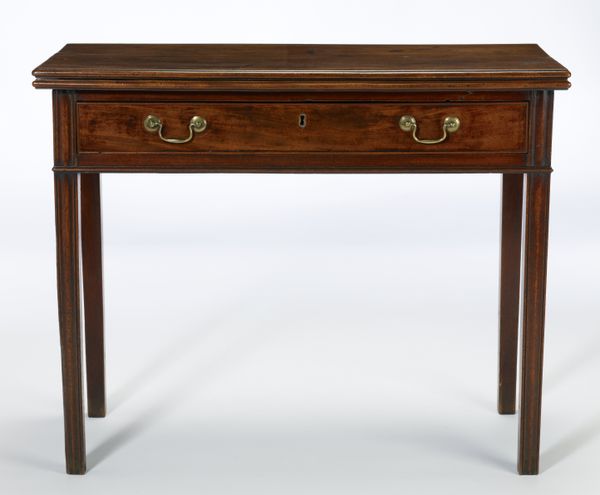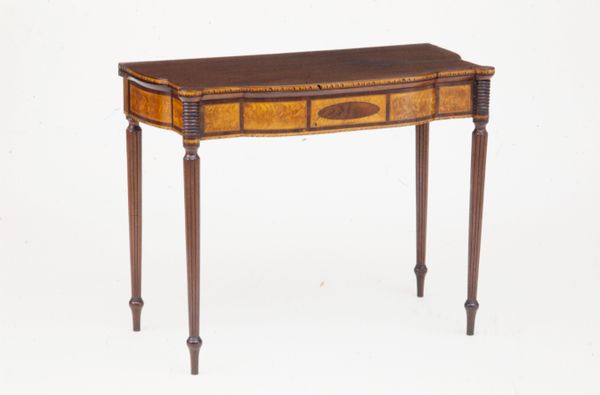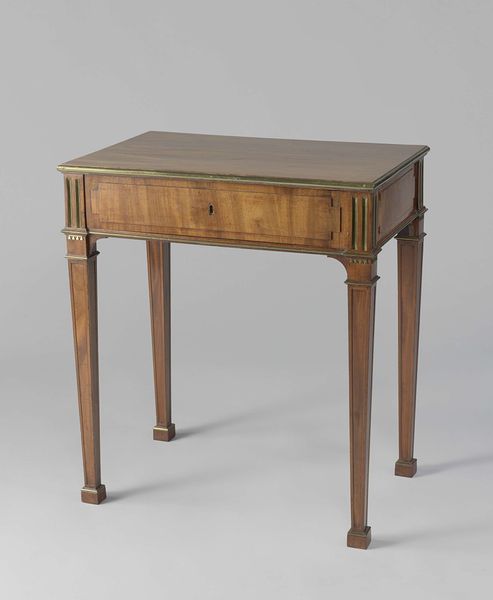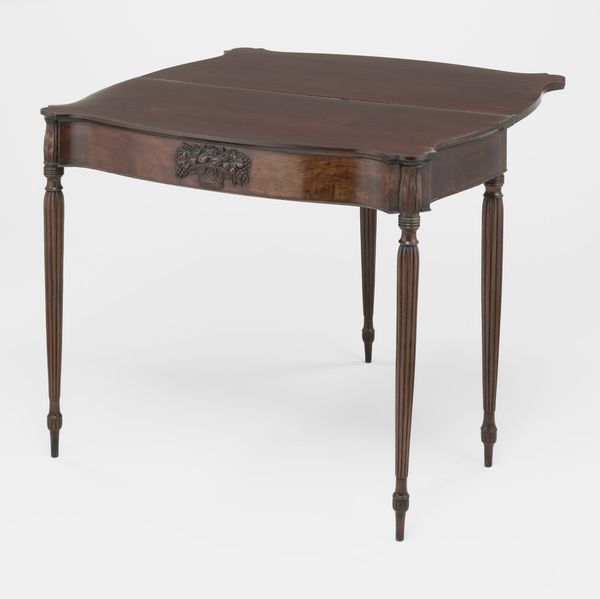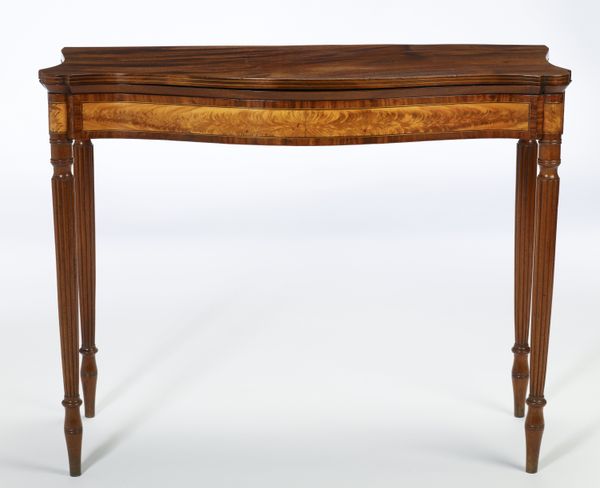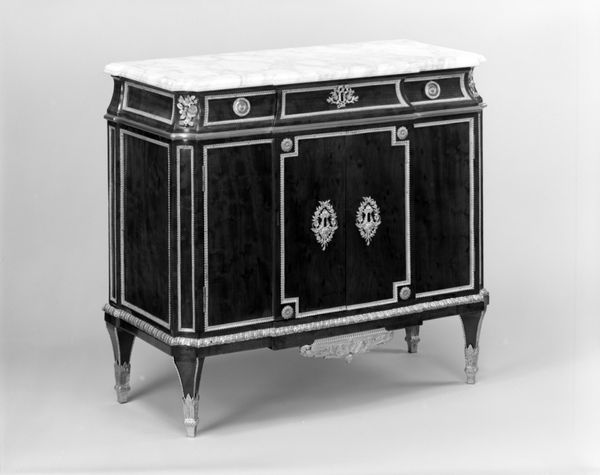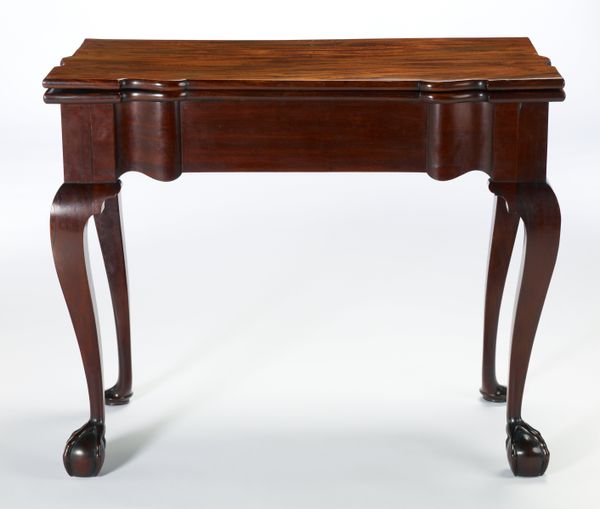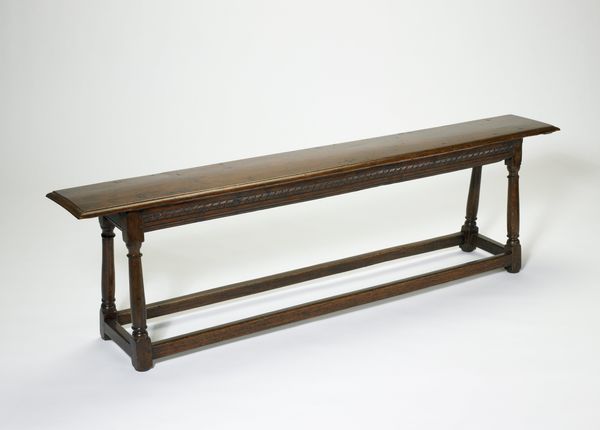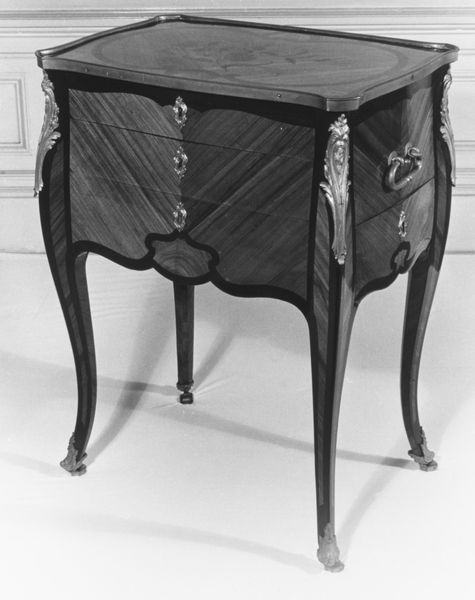
Dimensions: (open) 52 5/8 x 43 x 24 3/4 in. (133.7 x 109.2 x 62.9cm)
Copyright: Public Domain
Curator: Standing before us is an elegant "Writing and Dressing Table" crafted between 1780 and 1790. It is currently held at the Metropolitan Museum of Art. Editor: My first impression is of a delicate balance. The lines are so clean and sharp, yet there's an overall sense of understated luxury. It looks like a functional sculpture. Curator: Precisely! It's the work of Martin Carlin, a cabinetmaker celebrated for his refined Neoclassical furniture. Notice the exquisite marquetry and the gilt-bronze mounts. How do those materials strike you? Editor: Well, from a materialist perspective, the juxtaposition of wood, metal, and what looks like a leather writing surface immediately raises questions about craftsmanship and the social context of its creation. Who were the artisans involved? What were their working conditions? What determined the value assigned to different materials and labor at the time? Curator: A fascinating inquiry. Formalistically, though, the contrast of textures, colors, and geometric shapes produces a visual harmony. The way light reflects off the bronze fittings against the matte surface of the wood generates a visual push and pull. It’s almost like a codified language of status. Editor: True, and thinking about consumption habits reveals further complexities. A piece like this signals wealth, class, and access to particular trades. It wasn’t simply an aesthetic object, but something deeply intertwined with power structures. Were the materials sourced locally? Or were they symbols of colonial dominance, tied to global trade networks that benefited a privileged elite? Curator: That leads us to the cultural meaning imbedded within the piece's visual language. Notice the balanced proportions, a clear reference to classical ideals, suggesting a world of order, reason, and control that characterized the Enlightenment's aesthetic aspirations. The formal refinement creates an overall impact which projects luxury and intellect. Editor: Seeing those gilt-bronze details through the lens of material production shifts the emphasis, though. One has to remember that such craftsmanship was labor intensive and likely predicated on deeply asymmetrical power dynamics of class, skill and economic disparity. Curator: A brilliant reminder to seek the multilayered essence of objects! What starts as a pure admiration of form leads to bigger, challenging and equally fascinating social issues. Editor: Absolutely! And considering both, we have a richer and far more challenging picture of a work that once sat squarely in someone's private chamber.
Comments
No comments
Be the first to comment and join the conversation on the ultimate creative platform.
